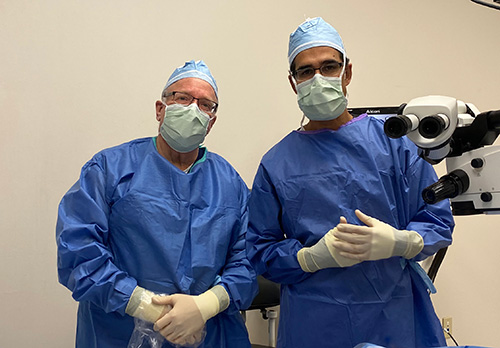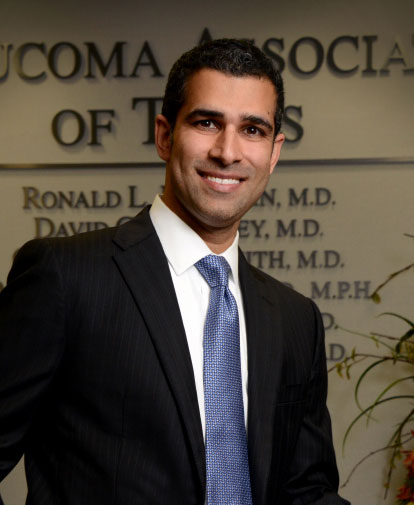Summary of the Nerve Growth Factor Study in Glaucoma
Glaucoma Associates of Texas (GAT) was invited by the Chairman of Ophthalmology at Stanford University (Jeffery Goldberg, MD, PhD) to participate in a groundbreaking study that may help regenerate nerve tissue and improve vision in our glaucoma patients.
This is a study in which a nerve growth factor (called ciliary neurotrophic factor (CNTF)) will be used to regenerate nerve tissue damaged from glaucoma. The specific goal of this study is to protect and improve the functioning of sick, but not dead, nerves that are damaged due to glaucoma (retinal ganglion cells). This study will involve an implant, which is a novel, cell-based drug delivery system that delivers human CNTF inside the eye, after implantation via a microscopic incision in the wall of the eye (sclera).

In various animal models, the use of this growth factor has been shown to protect the retinal nerve cells from damage in the setting of trauma, retinal diseases and glaucoma. This nerve growth factor has also been shown to regenerate optic nerve tissue.
To date, nearly 300 human subjects in the U.S. have been implanted with this drug delivery device for the treatment of macular degeneration and retinitis pigmentosa without any significant or concerning side effects related to the device or the growth factor.
A phase I trial, based at Stanford University, was completed in 11 glaucoma patients in whom this device was implanted. To date, no serious adverse events related to the implant or drug were reported. The initial results in this study suggested improvement of visual field, contrast sensitivity and increased nerve thickness.
Glaucoma Associates of Texas is one of a 3 centers in the United States to participate in this study (Stanford University, Columbia University and GAT). A grant from Cure Glaucoma is completely funding this research study in Dallas.
Over the past 2 years, 7 patients have already received the implant at GAT and 3 more are awaiting treatment. In total, over 50 patients with glaucoma have received the implant and the one-year results are very promising. The initial analysis of the data suggests a trend towards improved visual function and nerve fiber layer thickness in the treatment group. Our hope is that this study may unlock the key to regenerating nerve tissue in our glaucoma patients, and further our mission to help cure glaucoma.

Davinder S. Grover, MD, MPH
Attending Surgeon and Clinician
Director of Clinical Research
Glaucoma Associates of Texas
Dallas, Texas, USA

 DONATE NOW
DONATE NOW